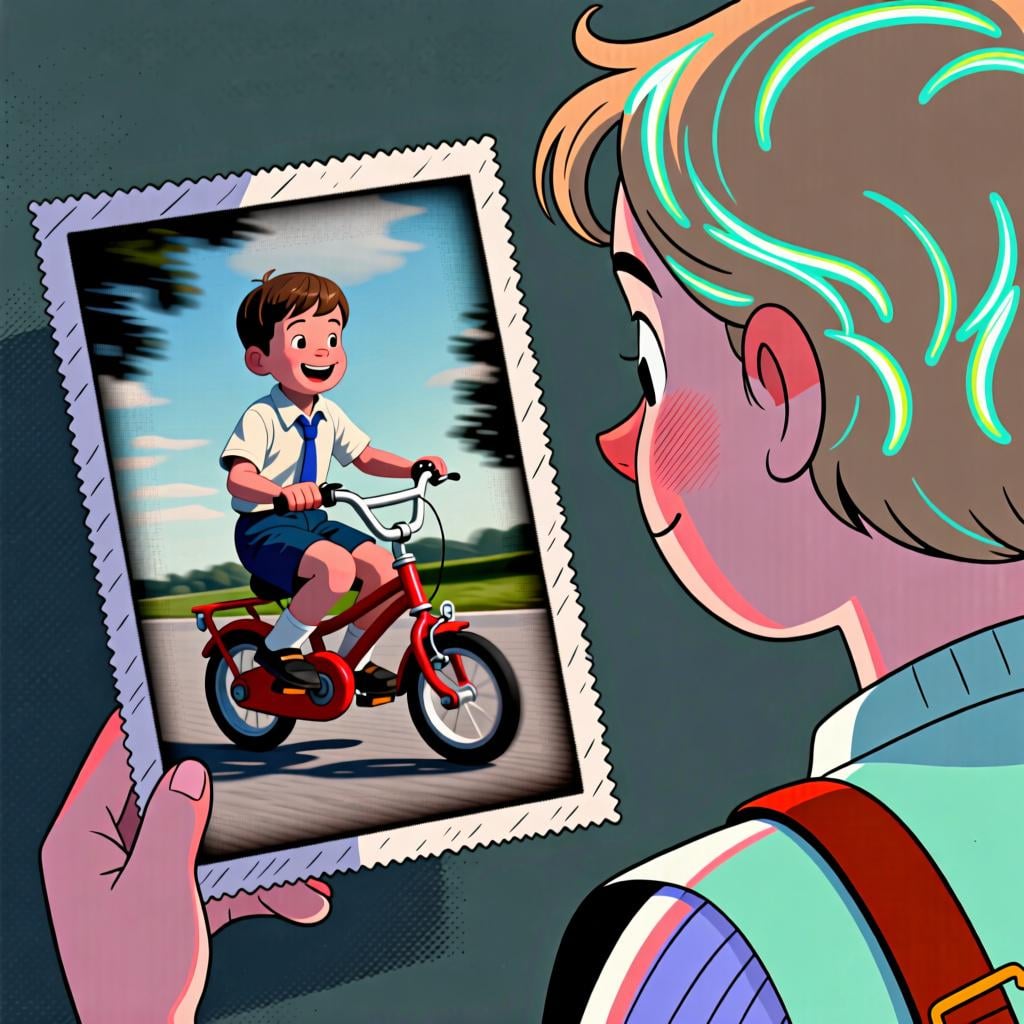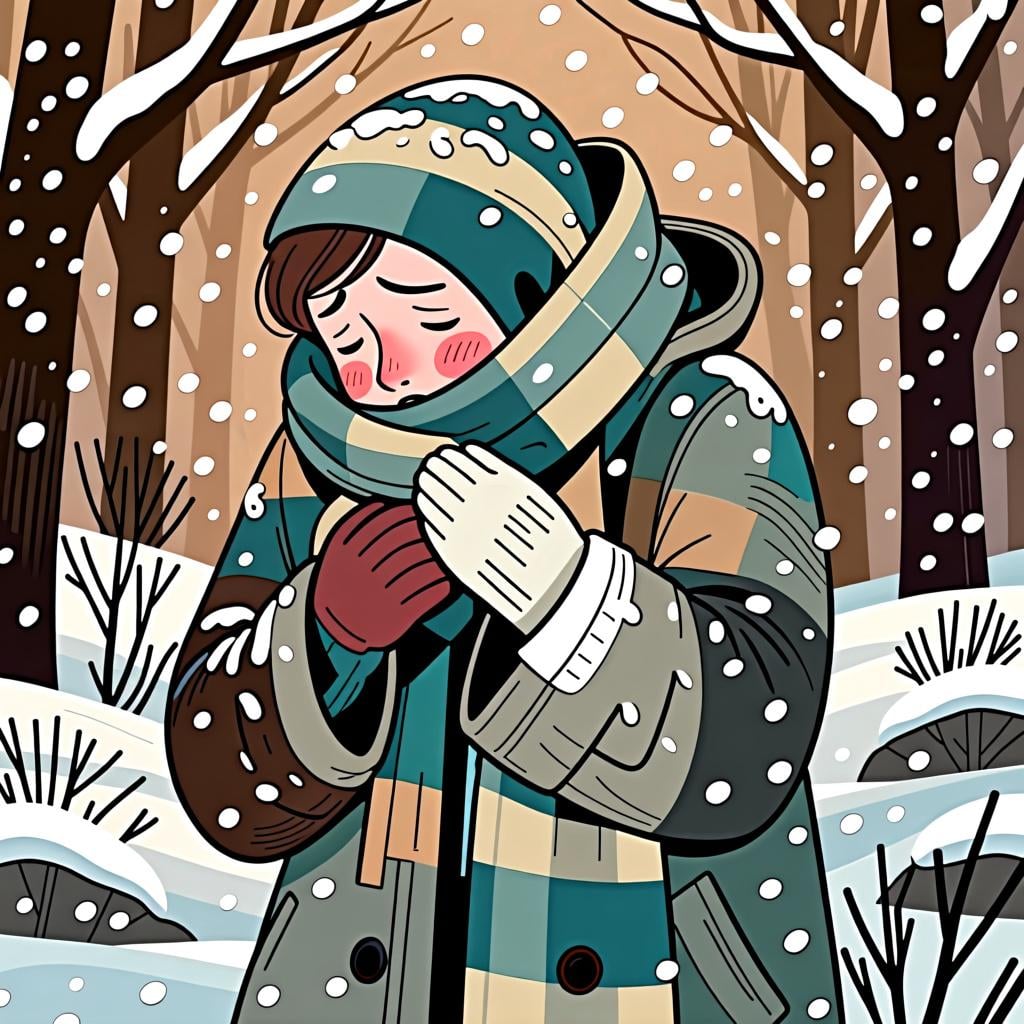tenía
/te-NEE-ah/
had

Just like this person once had a bicycle, 'tenía' describes something you possessed or used to have in the past.
tenía(Verb)
had
?possession
used to have
?continuous or repeated possession in the past
📝 In Action
Cuando era niño, tenía un perro llamado Fido.
A2When I was a child, I had a dog named Fido.
Ella tenía el pelo muy largo antes.
A2She used to have very long hair before.
La casa tenía un jardín grande.
A2The house had a big garden.
💡 Grammar Points
Describing the Past with 'Tenía'
'Tenía' is used to talk about things that were true for a period of time in the past, not just a single moment. Think of it as setting the scene: 'The castle was old and it had a tall tower.' ('El castillo era viejo y tenía una torre alta.')
❌ Common Pitfalls
Using 'Tenía' vs. 'Tuve'
Mistake: "Ayer, tenía una reunión importante."
Correction: Ayer, tuve una reunión importante. Use 'tuve' for a completed action at a specific time (yesterday). Use 'tenía' for ongoing states or descriptions in the past.
⭐ Usage Tips
Setting the Scene
Use 'tenía' when you're telling a story to describe the background details. What did the person look like? What was the place like? 'La mujer tenía ojos azules y el restaurante tenía pocas mesas.'

To talk about how old someone was in the past, you always use a form of 'tener', like 'tenía'. For example, 'Aquí, yo tenía cinco años' (Here, I was five years old).
📝 In Action
Cuando nos conocimos, yo tenía veinte años.
A2When we met, I was twenty years old.
¿Cuántos años tenía el emperador cuando murió?
B1How old was the emperor when he died?
💡 Grammar Points
Age is Something You 'Have'
In Spanish, you don't 'be' an age, you 'have' it. This is true for the present ('tengo 30 años') and the past ('tenía 30 años').
❌ Common Pitfalls
Translating Directly from English
Mistake: "Yo era veinte años."
Correction: Yo tenía veinte años. Always use the verb 'tener' for age, never 'ser' or 'estar'.

'Tenía' is also used with words like 'frío' (cold), 'hambre' (hunger), or 'sueño' (sleepiness) to describe how you were feeling in the past.
tenía(Verb)
was
?for feelings like hungry, thirsty, cold
felt
?describing an internal state
📝 In Action
No desayuné, así que tenía mucha hambre.
A2I didn't eat breakfast, so I was very hungry.
El niño tenía sueño y quería ir a la cama.
A2The child was sleepy and wanted to go to bed.
Tenía miedo de la oscuridad cuando era pequeño.
B1I was afraid of the dark when I was little.
💡 Grammar Points
Physical States You 'Have'
Just like with age, many feelings and physical states are things you 'have' in Spanish. You don't say 'I was hungry,' you say 'I had hunger' ('Tenía hambre').
❌ Common Pitfalls
Using 'Estar' for Physical States
Mistake: "Yo estaba hambre."
Correction: Yo tenía hambre. Remember the pattern: 'tener' + noun (hambre, sed, frío, calor, sueño, miedo).

When you see 'tenía que', it means someone had an obligation or needed to do something in the past.
📝 In Action
Tenía que terminar mi tarea antes de salir.
A2I had to finish my homework before going out.
Llovía mucho, así que teníamos que cancelar el pícnic.
B1It was raining a lot, so we had to cancel the picnic.
💡 Grammar Points
The 'Have To' Formula
The formula is simple and powerful: 'tenía' (or another form of tener) + 'que' + the base form of a verb (like estudiar, comer, ir). It always works this way.
❌ Common Pitfalls
Forgetting 'que'
Mistake: "Tenía estudiar mucho."
Correction: Tenía que estudiar mucho. The 'que' is essential; it's the bridge between 'tenía' and the action you had to do.
🔄 Conjugations
indicative
present
imperfect
preterite
subjunctive
present
imperfect
✏️ Quick Practice
💡 Quick Quiz: tenía
Question 1 of 1
Which sentence correctly uses 'tenía' to describe a background situation in a story?
📚 More Resources
Frequently Asked Questions
What is the difference between 'tenía' and 'tuve'? They both mean 'I had'.
Great question! It's about how you see the past action. Use 'tenía' for descriptions, habits, or ongoing situations in the past ('Cuando era niño, tenía un perro' - When I was a child, I had a dog). Use 'tuve' for a specific, completed event ('Ayer, tuve un examen' - Yesterday, I had an exam). Think of 'tenía' as the background scenery of a story, and 'tuve' as the main action that happens.